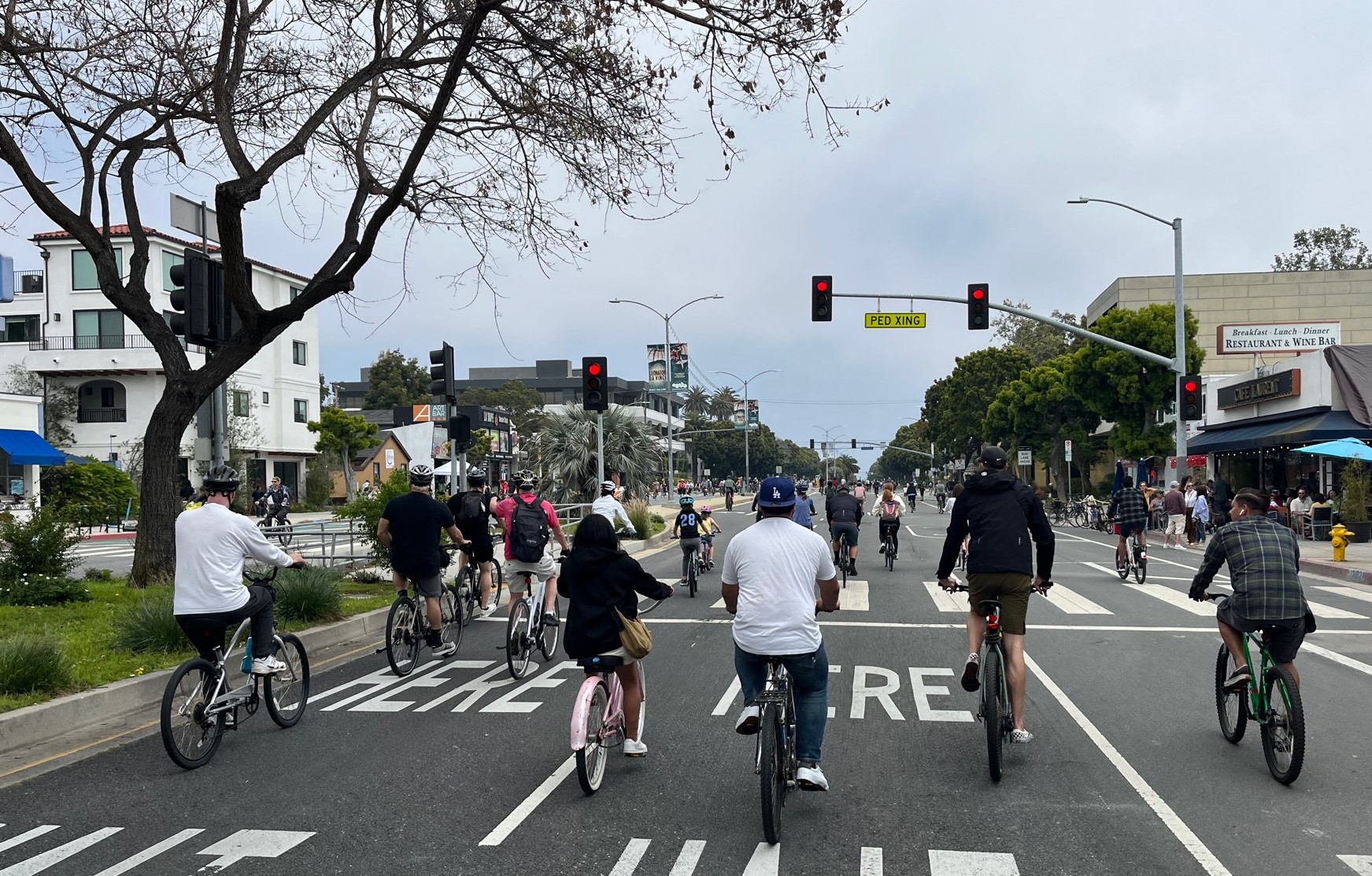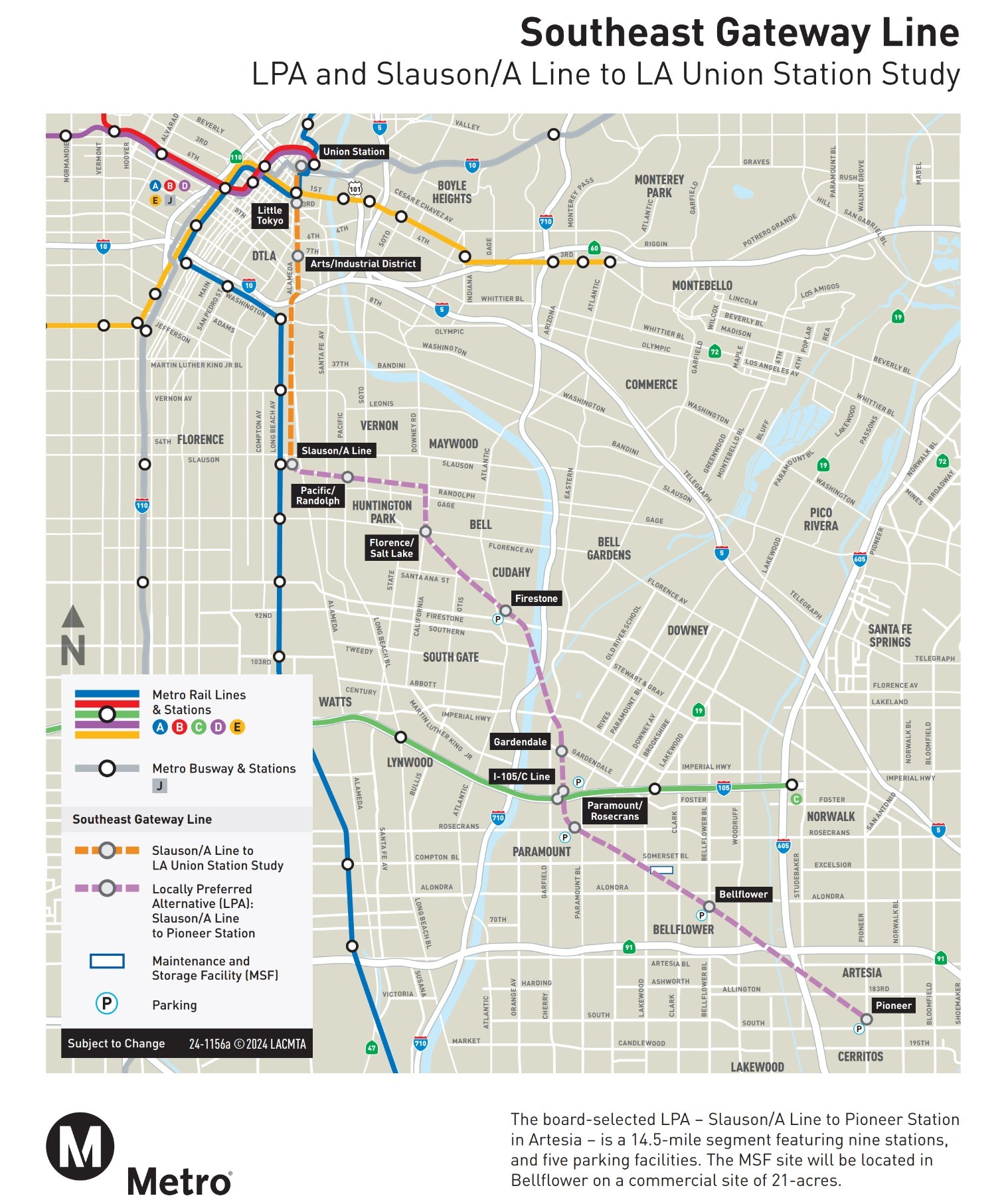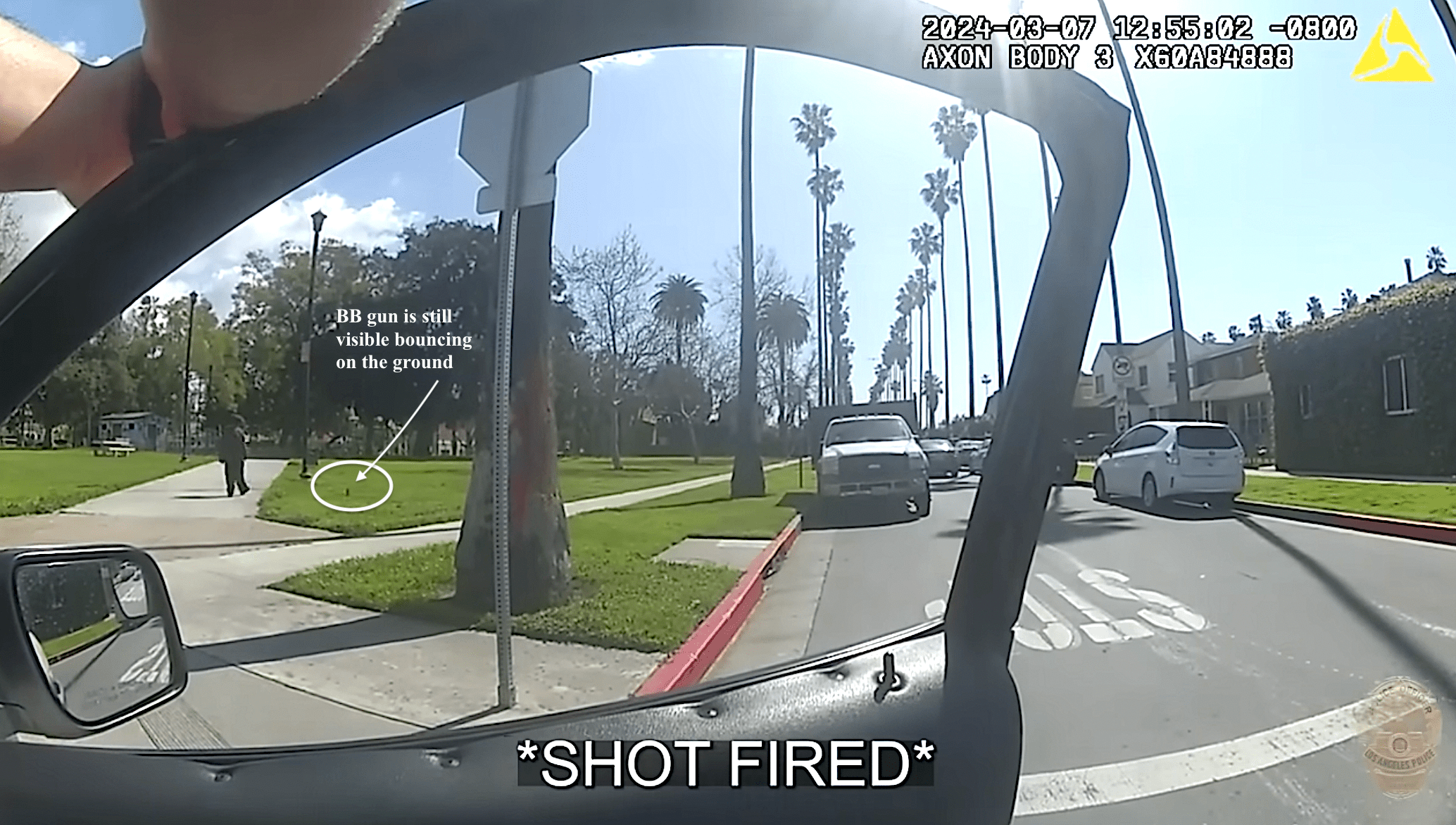Latino Urban Forum Leader Calls for Taco Truck Permits
8:49 AM PDT on June 13, 2008

Last month, the LA County Board of Supervisors issued an edict that all taco trucks would now have to move every hour taking a firm stand against the free market and for increased vehicle miles traveled. Hilariously, the first taco truck that was ticketed was actually owned by the same people that owned the adjacent restaurant and used the truck as a takeout window.
Recently James Rojas, whose model of downtown appeared earlier this week in Streetsblog, wrote a piece for the Planning Report proposes a solution to the taco truck problem which would allow local government to collect some money and legitimate taco trucks to stay in business. Rojas' piece is reprinted in its entirety here with the permission of the author.
Latino Urban Forum's James Rojas Supports Permitting L.A.'s Street Vendors
A recent move by the L.A. County Supervisors has sparked a debate about the benefits that mobile food vendors bring the community.
The county of Los Angeles recently passed a law prohibiting street vendors (i.e., taco trucks) from lingering too long in one location, engendering controversy between the public and the brick and mortar businesses who claim to be threatened by these street vendors. In the following TPR exclusive, James Rojas, of the Latino Urban Forum, makes the case that the county's new restrictions on street vendors may be overlooking the solutions to problems of walkability and pedestrian-friendly streets that these "mobile" businesses offer the region.
Many major cities in the United States have developed street vending policies, often managing a variety of urban needs in the process. For example, the city of Portland believes that vendors provide valuable street amenities for pedestrians, but requires street vendors to meet design standards in order to maintain the city's pedestrian-friendly aesthetic. New York City allows street vendors to sell fresh fruits and vegetables in city neighborhoods that have high obesity rates among its residents, providing a creative, portable solution to a problem often caused by a failure of planning and neighborhood development.
In addition to providing numerous entrepreneurial and job opportunities, street vendors offer other valuable services for urban problems specific to Los Angeles. Street vending could help strengthen the neighborhoods of Los Angeles by making the city more walkable and pedestrian-friendly and by helping to provide another level of safety through the presence of vendors and patrons on the streets.
For the most part, Los Angeles' existing street and sidewalk infrastructure discourages people from walking their neighborhoods and the areas they visit, work, or shop. Wide streets, poorly marked crossings, lack of directional signage and lighting, and the absence of quality pedestrian amenities all deter people from walking, which is an activity all residents of this diverse city have in common. It doesn't help that the city's history of auto-focused transportation planning necessitates that the vast majority of Angelenos drive for all of their day-to-day transportation need.
Street vendors could transform L.A.'s staid, auto-oriented streets into hubs of lively pedestrian activity through their do-it-yourself urban design interventions.
Street vendors move across L.A.'s commercial, residential, and industrial zones, looking for economic opportunity and helping to blur the line between these areas through their activities. They push carts down residential streets, bringing goods to residents who would otherwise have to drive or walk to the store. During lunch hours, they move into industrial zones. On weekends, they transform L.A.'s sidewalks into linear markets by displaying merchandise on chain-link fences, which also helps promote walking at these locations.
Street vendors sell everything from fresh fruit to elote (corn) at bus stops and rail stations, and they offer transit riders quick purchases that they can easily carry as they move around the city. In fact, street vendors make up for a striking lack in conventional retail activity at the region's transit stops.
Also, at no cost to the city, street vendors and their clientele provide security and safety improvements to city streets by providing additional "eyes and ears on the street," which helps deter crime and makes city streets feel safer.
Street vendors informally and inexpensively add a human scale and bring healthy activity to otherwise car-friendly and empty L.A. streets. The activity of seeking out and patronizing street vendors brings Angelenos outside and helps to create bonds with otherwise insignificant spaces in the city, such as surface parking lots, vacant lots, and sidewalks. Street vendors instantly transform these boring, under-used places into lively public spaces.
Allowing street vendors the opportunity to profit from the use of public rights-of-way could be a new way to make L.A.'s increasingly unsustainable, auto-oriented infrastructure more compatible for pedestrian uses. Street vendors have ingeniously tapped into the pedestrian energy in this city by wisely identifying streets where people tend to congregate, temporarily transforming vacant lots, sidewalks, and curbs into pedestrian-oriented patios and mercados.
The city and county of Los Angeles should support, while regulating, street vendors to operate in selected transit areas. This could include both heavy and light rail stations, where sufficient space and appropriate facilities are in place for such operations. Bus transit centers, including areas along the Orange Line, could also be made available for street vendor business operations. Among the requirements could be a series of reasonably-priced annual vendor permits, requirements for maintaining at minimum a "B" rating from the Health Department for food service operations, and other appropriate requirements. This could help add much needed revenue to local government coffers, and at the same time provide assurance to the transit-using public of the legitimacy of the presence of vendors at selected transit stations.
Streets with high pedestrian activity can serve as additional areas for the creation of street vending zones. This will enhance the pedestrian experience in ways similar to that of shopping malls such as the The Grove.
As L.A. becomes denser and people are encouraged to walk, bike, and use public transportation, street vendors meet the needs of these newfound priorities. The car-oriented mini-malls of the '80s are giving way to the street vendors in the new century. As Los Angeles seeks new ways to deal with congestion and to get Angelenos out of their cars, the city should think about using street vendors as an innovative way to help solve our congestion problems.
Photo: BeastandBean/Flickr
Stay in touch
Sign up for our free newsletter
More from Streetsblog Los Angeles
This Week In Livable Streets
Active Streets Mission-to-Mission, LAPD reports on its use of force in 2023, Pasadena Transit plans, Metro subway construction, and more
Eyes on the Street: Santa Monica Connection from E Line Bike Path to Downtown Is Almost Complete
“Always be closing gaps in your bikeway network.”
CicLAvia Opens Venice Boulevard – Open Thread
CicLAvia opened six miles of Venice Boulevard - from Culver City Station to Venice Beach
LAPD shoots, strikes unarmed unhoused man as he walks away from them at Chesterfield Square Park
The newly released briefing video depicts Robles as non-compliant and claims officer Gomez-Magallanes shot him for pointing a weapon at officers, but body cam footage shows Gomez-Magallanes continued to fire at - and ultimately hit - Robles after he turned away and tossed the BB gun aside.




